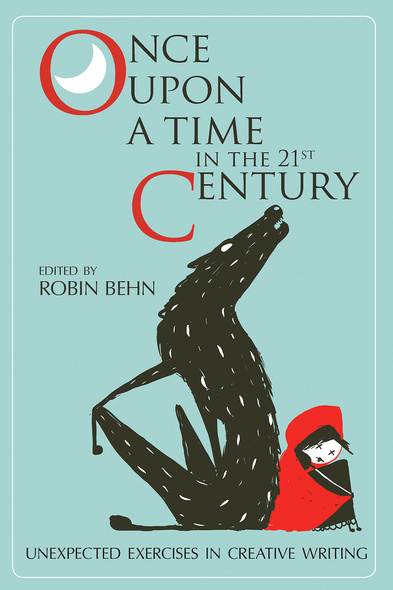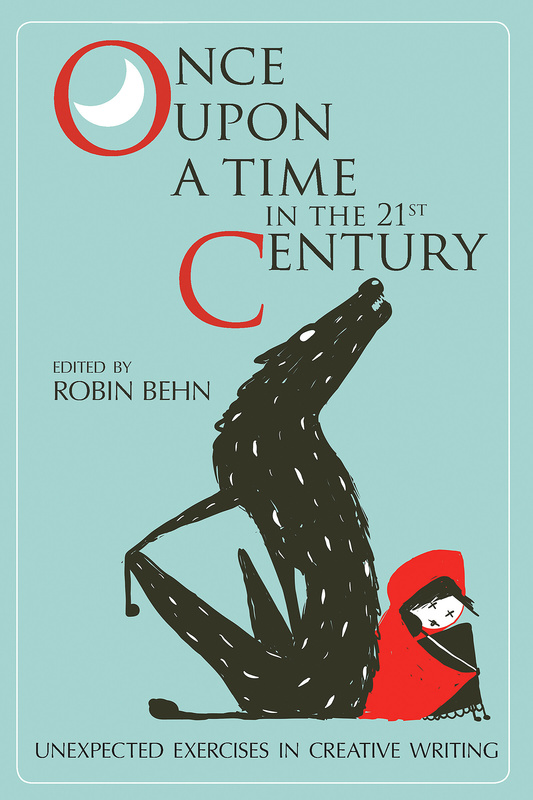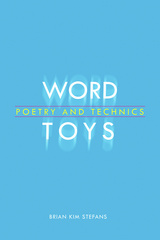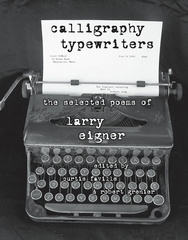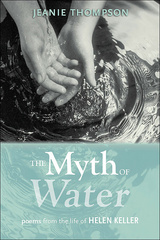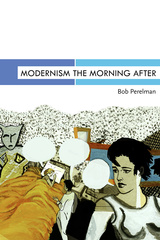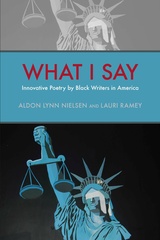Once Upon a Time in the Twenty-First Century
Unexpected Exercises in Creative Writing
Fun and innovative exercises and prompts for creative writing students
Once Upon a Time in the Twenty-First Century: Unexpected Exercises in Creative Writing is a unique creative writing text that will appeal to a wide range of readers and writers—from grade nine through college and beyond. Successful creative writers from numerous genres constructed these exercises, including poetry, fiction, and creative nonfiction to one-act plays, song lyrics, genre fiction, travel guides, comics and beyond. The exercises use a broad range of creative approaches, aesthetics, and voices, all with an emphasis on demystifying the writing process and having fun.
Editor Robin Behn has divided the book into three writing sections: Genres and Forms, Sources and Methods, and Style and Subject. In each section, Behn offers a brief introduction which explains how to get started and specific ways to develop one’s writing. Each introduction is followed by extensive exercises that draw on literature from classic to contemporary, as well as other art forms and popular culture. Examples range from Flannery O’Connor and Langston Hughes to Allen Ginsberg and Gertrude Stein, from Jamaica Kincaid and James Joyce to Arlo Guthrie and Harryette Mullen. Integrated within the exercises are apt examples of student writings that have emerged from actual use of the exercises in both the classroom and in writing groups. The book concludes with general advice and direction on how to get published.
Based on years of hands-on experiences in the teaching of creative writing in high schools, colleges, and after-school writing clubs, this volume of exercises offers inestimable value to students and teachers in the traditional classroom, as well as a growing number of homeschoolers, those who are part of a writing club or group, and independent writers and learners of all ages.
Over the last 20 years of conducting the New England Young Writers’ Conference I’ve had many requests by high school English and writing teachers for a list of creative writing resources for instructing their students. Robin Behn’s volume, Once Upon a Time in the Twenty-First Century: Unexpected Exercises in Creative Writing, now sits at the top of that list. This book is a rich collection of unique and expansive prompts coupled with instruction and technique. Each section gives stimulating guidance, exploring method, genre and form that is creatively motivating. It’s ideal for both the teacher and the middle or high school student interested in creative writing; I’m excited to have this resource at my fingertips.’
—Karla Van Vliet, poet, artist, administrator of the New England Young Writers’ Conference
Let us arrange the letters of the alphabet to say: this book is terrific. Its adventurous approach to creative writing will entice even the most reluctant writers and offer fresh inspiration to students who already love to write. From crafting sestinas to casting spells, these exercises offer clear steps to creating new written works of art in unique and fun ways. Explode your poem! Use an online translator to say something that’s never been said! Write a story one word at a time with a partner! We know these ideas and the dozens more in this book, along with methods of exploring style and even advice on getting started with publication, will energize and encourage writing students of all ages. We’re thrilled to add this volume to our library.’
— Roxanne Banks Malia and Kimberly O’Connor, Lighthouse Young Writers Program Co-Directors
Contents
Acknowledgments
Introduction
Part 1. Genres and Forms Galore
Chapter 1. I’ll Put a Spell on You by Pia Simone Garber, A. B. Gorham, Megan Paonessa, and Betsy Seymour
The art of spell writing, using repetition, and chanting.
Chapter 2. Bake a Cake in an Earthquake: How-To Guides and Process Descriptions by Pia Simone Garber, A. B. Gorham, Megan Paonessa, and Betsy Seymour
Let a story emerge from your instructions.
Chapter 3. Guidebooks Galore! Chart Uncharted Places by Pia Simone Garber, A. B. Gorham, Megan Paonessa, and Betsy Seymour
Create a guide to your room, cell phone, refrigerator, and more.
Chapter 4. Postcard Stories by Zachary Doss, Meredith Noseworthy, and Bethany Startin
Two characters have an exotic exchange through postcards.
Chapter 5. Creative Nonfiction by Kenny Kruse
Twenty little memoir projects, plus a squirrel.
Chapter 6. Tropes Unlimited: Genre Fiction by Kristin Aardsma and Brian Oliu
Explore the habits of genre fiction (fantasy, horror, sci-fi, mystery, etc.) and put them to use.
Chapter 7. Where Frankenstein Meets Frodo, Part One: Creating a Character for Genre Fiction by Creating Their Facebook Page by Kristin Aardsma and Brian Oliu
Like Frankenstein’s creator, build a character bit by bit until it’s ready to come to life in your own genre fiction.
Chapter 8. Where Frankenstein Meets Frodo, Part Two: Our Hero’s Hundred-Story Hotel and Other Settings for Your Genre Fiction Character by Kristin Aardsma and Brian Oliu
Give your main character a room (or rooms) of their own.
Chapter 9. What’s Your Alibi? by Jessie Bailey, Jesse Delong, A. B. Gorham, and Lisa Tallin
How will your character explain their way out of this one?
Chapter 10. Interviews: For Groups Large and Small by Jenny Gropp and Stephen Hess
“I feel that I am as necessary as my face”: conduct an absurdist interview.
Chapter 11. Once Upon a Time in the Twenty-First Century: Retelling Fairy Tales by Pia Simone Garber
Why was Little Red Riding Hood so readily tricked by the Big Bad Wolf and what would you have done in her place?
Chapter 12. “Is He for Real?”: Character-Based Flash Fiction, Part One: Defining a Character through Action and Dialogue by Katie Berger, Laura Kochman, and Brandi Wells
Conjure up a living, breathing character in as few words as possible.
Chapter 13. “Is He for Real?”: Character-Based Flash Fiction, Part Two: Defining a Character through an Unexpected Setting by Katie Berger, Laura Kochman, and Brandi Wells
“The mermaid sitting in my tree was drenched . . .”
Chapter 14. Collaboration with Fly: Learning from Lydia Davis by Stephen Hess
Be inspired by this flash fiction master’s work to write your own flash fiction.
Chapter 15. The Relationship between Truth and Fiction by Ashley Chambers, Annie Hartnett, and Christopher McCarter
How can “truth” inspire a writer of fiction?
Chapter 16. Little Novels by Jessie Bailey and Pia Simone Garber
Condense classic novels and movies into tiny pieces.
Chapter 17. It Is By Chance That We Meet: Writing A One-Act Play Through Collaboration by Alex Czaja, Romy Feder, Stephen Thomas
Here, you and three others will write a one-act play.
Chapter 18. Quick Found-Language Sonnets by Molly Goldman, Kenny Kruse, and Sally Rodgers
Recycle language into fourteen-line poems.
Chapter 19. Social Network Haiku by Chapin Gray and Kirk Pinho
Update the haiku form by writing away messages and Facebook haiku.
Chapter 20. Rhymes Real Cool: Studies in Rap Lyrics by Christopher McCarter
Tap some rhymes to use in rap.
Chapter 21. Oral Poetry: The Physical Landscape of Your Poetic Voice by Curtis Rutherford
Tones, tempos, and timbres—shape your poem with your voice.
Chapter 22. Collaborative Ghazal by Chapin Gray and Kirk Pinho
Explore this mesmerizing Arabic form and write one with a group or on your own.
Chapter 23. Collaborative Abecedarian (For up to Twenty-Six Writers) by Sally Rodgers
Fall in love with the alphabet all over again and use it to organize and inspire a poem.
Chapter 24. The Triolet by Pia Simone Garber
A French poetic form full of rhymes and repetition.
Chapter 25. Oh, Ode! by Leia Wilson
Swoon! Celebrate! Write an ode and then try an Exquisite Corpse ode as a group.
Chapter 26. Sestinas: Six Words, Obsessed! by Chapin Gray, Jenny Gropp, and Kirk Pinho
Learn the basic sestina form, “cheat” your way to an abridged sestina, write a giant sestina, and take the Ode-Sestina Challenge.
Chapter 27. Nonce, Not Nonsense: Poetry Meets the Future by Jenny Gropp and Emma Sovich
Work with the “Century” and the “Portion,” and then create your own unique poetry form.
Chapter 28. Poetry from Math: The Fib and Beyond by Jenny Gropp and Emma Sovich
Learn a poetic form based on the Fibonacci sequence, and then head further into the realm of poetry and equations.
Chapter 29. Pillow Book Lists: Observing Experience for Creative Nonfiction by Katie Berger and Pia Simone Garber
Get started with autobiographical writing by making expressive lists and snatching up the details right by your side.
Chapter 30. A Travel Guide of the Self by Katie Berger and Pia Simone Garber
Take yourself on a tour of you through travel writing and second-person point of view.
Chapter 31. Expert Experience: The Art of the Unlikely, Opinionated Review by Katie Berger and Pia Simone Garber
Creative nonfiction meets the review when you write your own brief, detailed—and unexpected—review of something you know a lot about.
Part 2. Ye Olde Language Lets Loose
Chapter 32. TNT Prose: Explodable, Expandable Text by Jenny Gropp and Kirsten Jorgenson
Use your own words as dynamite to blow out the words of an existing text, revealing a new piece of writing when the dust clears.
Chapter 33. Take It Away: Erasure by Jenny Gropp and Kirsten Jorgenson
Erase your way to a new piece.
Chapter 34. Ye Olde Language Made New: “False” Translation by Jenny Gropp
Take a text from another language and “translate” it according to several zany methods.
Chapter 35. Sounds into Words, Words into Sounds by Molly Goldman
Turn a sound jumble into a poem.
Chapter 36. Starting from a Song, Part One: Remixing a Song in Writing by Tasha Coryell and Steve Reaugh
Be a one-hit wonder!
Chapter 37. Starting from a Song, Part Two: Under the (Musical) Influence by Tasha Coryell and Steve Reaugh
Let music put you in a writing mood.
Chapter 38. Balderdash for Writers: New Stories from an Old Box by Jesse Delong and Megan Paonessa
Create stories by playing a few rounds of this classic word game.
Chapter 39. Disaster City: A Facebook-y Adventure by Rachel Adams, Jessie Bailey, and Kirsten Jorgenson
Map out a city and fill it with characters and plot twists in this collaborative fiction activity that uses moves that you might recognize from Facebook.
Chapter 40. Consequences: A Parlor Game of Surprise Narratives by Kit Emslie and Sarah Kelly
First played by the Victorians, Consequences is a parlor game similar to the famous Surrealist exercise “exquisite corpse.”
Chapter 41. Constraints, Odd Characters, and Secret Postcards: A Fresh Approach to Character and Context by Kirsten Jorgenson, Betsy Seymour, and Danilo Thomas
Create questions that generate eccentric characters and then write their secrets down on postcards in this group activity.
Chapter 42. Broken Picture Telephone: Modernist Poets Meet the Grade-School Game of Telephone by Rachel Adams, Pia Simone Garber, Kirsten Jorgenson, and Betsy Seymour
Explore the tie between thought and image by making a miniature deck of phrase and image cards, and then use the cards like a modernist poet.
Chapter 43. Magazine Shuffle: From Image to Character, Narrative, and Third-Person-Limited Point of View by Rachel Adams, Pia Simone Garber, Kirsten Jorgenson, and Betsy Seymour
Combine simple images from magazines to create characters and then narrate their stories from the third-person-limited point of view.
Chapter 44. Improv at the Zombie Diner: Platform and Dialogue by Holly Burdorff, Luke Percy, and Maggie Smith
In this exercise, you’re going to be put in a dangerous situation, and you’re going to have to act fast.
Chapter 45. Comicpalooza: The Art of the Panel by Rachel Adams, Pia Simone Garber, Kirsten Jorgenson, and Betsy Seymour
See how comic books use narrative, then build your own characters, images, and a story to make a new comic.
Chapter 46. Fast Talkers and Faster Writers: Speed Transcription by Chapin Gray, Brian Oliu, and Kirk Pinho
Practice writing while someone reads a text as fast as possible, picking up what you can and freeing up your associative writer’s imagination along the way.
Chapter 47. Obsessions: Seven Way by Kristin Aardsma and Breanne LeJuene
Chocolate truffles, the color purple, America . . . obsess on your obsession!
Chapter 48. Grand Theft Writing: Swiped Beginnings by Chapin Gray, Brian Oliu, and Kirk Pinho
Use the beginning of another text to get your momentum going.
Chapter 49. Crazy Headlines and Hyperlink Chasing: Finding and Using a Bizarre Persona by Chapin Gray, Brian Oliu, and Kirk Pinho
Use hyperlinks to uncover a subject for your new piece.
Chapter 50. Genetically-Modified Franken-Poems by Chapin Gray and Breanne LeJuene
Cut up magazines and newspapers to create new poems, both individually and in groups.
Chapter 51. The Exploding Poem: How to Keep on Writing by Chapin Gray and Breanne LeJuene
Pull an image or object from a poem, write a new poem based on it, and then stuff it back in.
Chapter 52. Nice Hat, Thanks: Word-by-Word Poems by Kristin Aardsma, Breanne LeJuene, and Brian Oliu
With a partner, create improvisational writing one word at a time.
Chapter 53. Translation Mutation: Using Online Plot Generators and Translators by Kristin Aardsma, Breanne LeJuene, and Brian Oliu
Bounce a text through several languages using an online translator and then work with the unrecognizable results.
Chapter 54. Mad Lib Translations of Marquez by Jenny Gropp, Laura Kochman, and Jill Smith
Zany translations that go beyond Babelfish.
Chapter 55. Pictures and Words by Greg Houser and Emma Sovich
Write about—and beyond—the painting and its frame.
Chapter 56. “The Horse in Motion”: Poems in Response to Photographs and Paintings of Motion by Jenny Gropp
Learn about the history of capturing the body in motion in the visual arts and then extend the practice into your own poetry and prose.
Chapter 57. Book Flip!: Using Found Phrases by Jenny Gropp, Laura Kochman, and Jill Smith
Grab a book or magazine and flip your way to a new piece of writing.
Chapter 58. New Takes on the News: Obituaries, Classifieds, and Dear Abby by Greg Houser, Jill Smith, and Jessica Trull
Write hilarious news items.
Chapter 59. Now with Twenty Billion Readers: Writing a Craigslist “Missed Connection” by Greg Houser, Jill Smith, and Jessica Trull
What would you like to say to that stranger?
Chapter 60. From These Old Sayings to This Fresh Story: Revamping Cliché Phrases and Plots by Jesse Delong, Lisa Tallin, and Danilo Thomas
Take clichés like “head over heels” and well-known similes like “hard as a rock” and turn them into fresh ideas and complex plots.
Part 3. Slews of Styles and Subjects
Chapter 61. Realism: Tips from Tom Wolfe and Flannery O’Connor by Krystin Gollihue
Use an angle to depict settings and characters.
Chapter 62. World Building: Nonrealistic Characters and a Six-Sentence Story by Jess E. Jelsma and Matt Jones
Kafka and you.
Chapter 63. Rage Against the Creative Writing Machine: Dada in the House by Pia Simone Garber and Kirsten Jorgenson
Get introduced to the Dada movement and then write a “bad” poem and cut it up Dada style.
Chapter 64. The Beats and Scribbled Secret Notebooks: Chosen Words and Automatic Writing by Stephen Hess and Curtis Rutherford
An introduction to Beat poetry complete with how to write like Jack Kerouac.
Chapter 65. “I’m with You in Rockland”: “Howl” and Praise Poems by Stephen Hess and Curtis Rutherford
Like Allen Ginsberg writing “Howl,” write your own praise poem.
Chapter 66. A Call to Arms: Rally the Troops by Curtis Rutherford
Like the Beats, turn your anger into writing that explodes from the page, calling society and your fellow writers to action.
Chapter 67. Stealing Tone: Picking Up Where Your Favorite Authors Left Off by Molly Goldman
Identify an author’s moves and make them your own.
Chapter 68. A Journal of Particulars: Become a Zen Master of Your Senses by Jenny Gropp and Kirsten Jorgenson
In this journal-based exercise, get better acquainted with the five senses and write places into a more vivid existence.
Chapter 69. When Garlic Has Hips: Food Writing and Personification by Jenny Gropp and Kirsten Jorgenson
Make everyday foods more vivid by giving them human characteristics and lives.
Chapter 70. Pets of the Roman Empire, Dinosaurs of Today: Avoiding the Cute Kitty Cat When Writing about Animals by Kirk Pinho
Envision a major world event that was caused by a pet.
Chapter 71. Perilous Points of View: Giant Toads! Cockroaches! by Jessie Bailey, Jesse Delong, A. B. Gorham, and Lisa Tallin
Create an animal character and then stretch its wings (or gills or tentacles) out in story after story.
Chapter 72. When the Wrecking Ball Falls in Love: Reviving an Inanimate Object by Jessie Bailey, Jesse Delong, A. B. Gorham, and Lisa Tallin
Inhabit the mind, body, and soul of a strange and wondrous inanimate object of your choosing, and tell its tale.
Chapter 73. The Fairest of Them All: Talking to Objects for a Reason by Theodora Ziolkowski
What if we could write to our favorite piece of fruit or that cool poster hanging from our bedroom wall?
Chapter 74. Time for Rhyme by Pia Simone Garber, Jenny Gropp, Emma Sovich, and Leia Wilson
In this introduction to the many types of rhyme, like poet Robert Frost said, “all the fun’s in how you say a thing.”
Chapter 75. Love Poems and Refrains: Better than “Lemon Ice” by Pia Simone Garber and Curtis Rutherford
Throw the fanciful and flowery talk aside and be a filthy mess of affection in your own amped-up love poems.
Chapter 76. Death Poems: The Tragic and the Comic by Pia Simone Garber and Curtis Rutherford
Make your reader feel the gravity of death in different ways, writing both a comic poem and then a sincere elegy.
Chapter 77. Political Poems: Big Brother Is Watching You! by Pia Simone Garber and Curtis Rutherford
Brainstorm some experiences all people share (love, death, family, etc.) and use them to overturn common ideas about politics.
Chapter 78. Things That Go Bump in the Night: Reappropriating Stock Vampires, Witches, Zombies, and Other Creatures for a Twenty-First Century Scare by Tasha Coryell, Freya Gibbon, Molly Goldman, Krystin Gollihue, Jess E. Jelsma, Matt Jones, Meredith Noseworthy, Steve Reaugh, Sally Rodgers, and Bethany Startin
Time for The Ultimate Makeover: Zombie Edition.
Chapter 79. The Adult As Villain by Annie Hartnett
Try a child’s point of view.
Chapter 80. Objects and Elements: Set Your Imagination Loose! by Megan Paonessa and Danilo Thomas
Take the smallest, seemingly most inconsequential thing and turn it into a grand presence.
Chapter 81. Weapons of Voice: Practicing Long and Short Sentence Styles by Jesse Delong, Lisa Tallin, and Danilo Thomas
Imitate both sparse and long-winded writers in this fiction exercise.
Chapter 82. Exercises in Style: The Endless Possibilities of Language by Jenny Gropp
Use a hatful of strategies and games to tell the same story over and over again without it ever looking the same.
Chapter 83. The N+7 Game: From “The Snow Man” to “The Soap Mandible” by Jenny Gropp, Laura Kochman, and Jill Smith
Learn about the French literary movement Oulipo, and then grab a dictionary and an existing piece of writing for the N+7 game.
Chapter 84. Cramming It In: Jamming Narrative into a Short Space by Katie Berger, Laura Kochman, and Brandi Wells
Tell entire stories using only one sentence—no more!
Chapter 85. “Licking a Glacier Can Change Your DNA”: Landscape in Prose Poetry and Flash Nonfiction by Katie Berger, Laura Kochman, and Brandi Wells
Look at different methods for creating landscape in short forms, write out a landscape you’ve never seen, and then, in the final activity, put your hometown on Mars.
Chapter 86. Zero to Hero!: A Superhero of Uncommon Valor by Megan Paonessa and Danilo Thomas
Construct a superhero unlike any the world has ever seen.
Chapter 87. World Domination: Planets, Species, Disasters by Megan Paonessa and Danilo Thomas
Guide your superhero into battle on a strange and unheard-of planet.
Chapter 88. Demystifying the Publishing Process by Rachel Adams, A. B. Gorham, and Lisa Tallin
The sooner, the better: this applies to eating ice cream under the sun, finishing your history homework, and publishing your poems and stories. Here are a few hints on ways to publish your work.
Contributors
Literary Sources

